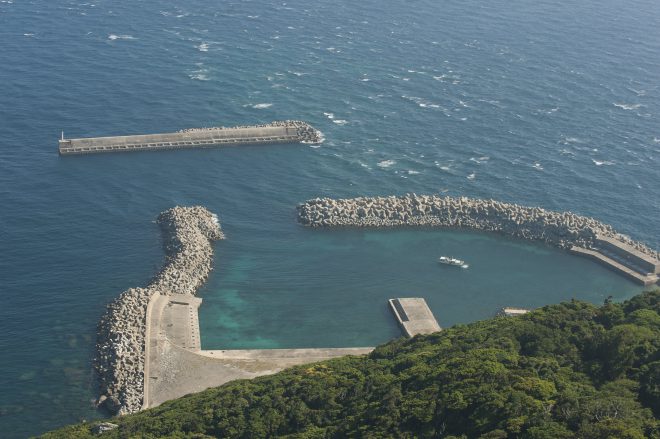Okinoshima, related sites inscribed to World Heritage List
July 10, 2017
POLAND- Okinoshima, a sacred island, and related religious sites in the southwestern Japan prefecture of Fukuoka were inscribed to the UNESCO World Heritage List on Sunday.
In May, the International Council on Monuments and Sites, or ICOMOS, recommended additions to the cultural heritage list of only Okinoshima and three rocks belonging to the island, rejecting the Japanese government's request for simultaneous inscription of all eight sites also including religious places in the Munakata region in the prefecture.
In its screening session in Krakow, Poland, on Sunday, however, the UNESCO World Heritage Committee overturned the advisory body's decision and fully accepted Japan's claim that all the sites are integral parts of the ancient religious culture in the region originating from Okinoshima, or the Munakata Taisha grand shrine's Okitsumiya shrine.
To help fully understand the value of the property, all eight assets should be inscribed, many members of the committee said, noting that they are culturally and historically integrated, according to sources access to the meeting.
The Sacred Island of Okinoshima and Associated Sites in the Munakata Region became the 17th property listed in the cultural heritage category and the 21st overall including natural heritage sites in Japan.
Located between Kyushu, one of Japan's four main islands, and the Korean Peninsula, entire Okinoshima has been worshipped. From the fourth to ninth centuries, large-scale rituals took place on the island to pray for successful interactions with people on the peninsula and in China as well as for the safety of navigation. Ancient ruins chronicling the island's history have been left intact there.
About 80,000 votive offerings, such as gold rings from the Korean Peninsula, as well as glass bowls from Persia, now Iran, which are believed to have been brought to Japan through the Silk Road, were dug out there, and all of them have been designated as national treasures. The three rocks, called Koyajima, Mikadobashira and Tenguiwa, serve as the gate of Okinoshima. (Jiji Press)
Latest Videos
- THE UNTOLD STORY EXPERT INSIGHTS INTO THE UKRAINE
- NEGOTIATING A NEW ORDER US RUSSIA TALKS ON UKRAIN
- Ukraine: A Pawn in the Geopolitical Game? Will Trump Intervene?
- US VP VANCE CRITICIZES EUROPEAN DEMOCRACIES AT MUNICH SECURITY CONFERENCE
- UNCOVERING THE WEB OF DECEIT: CIA INFILTRATION OF THE MEDIA
- SHIFTING SANDS: TULSI GABBARD’S CONFIRMATION AND THE EVOLVING GLOBAL LANDSCAPE
- FAUCI SCANDAL: A THREAT TO GLOBAL HEALTH AND DEMOCRACY






